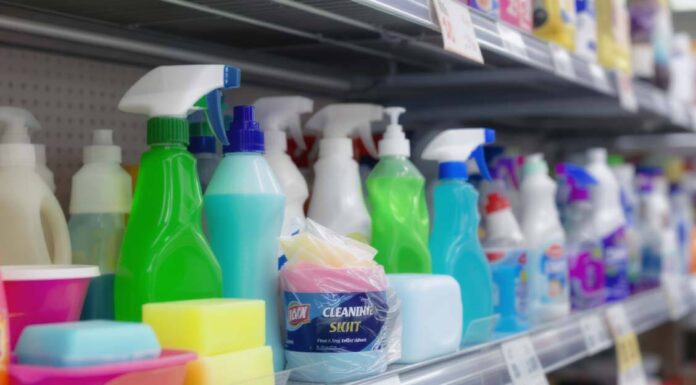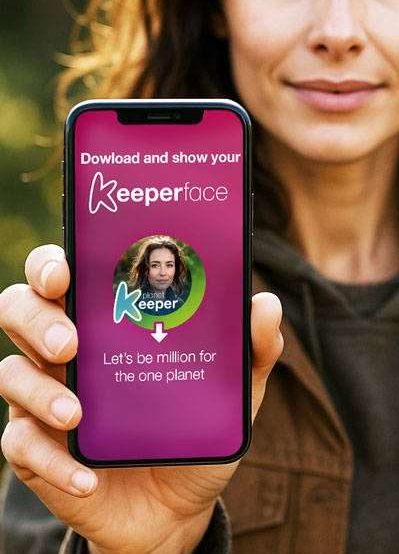A Crisis Brewing in Our Waters
Europe is surrounded by water but is not immune to water scarcity and pollution problems. The European Environment Agency’s latest findings are alarming, highlighting that only 37% of Europe’s surface water bodies reached ‘good’ or ‘high’ ecological status from 2015-2021. Adding another layer of complexity, toxic residues from “forever chemicals” like PFAS found in detergents have tripled over the last decade. With 20% of Europe’s territory and 30% of its population annually affected by water stress, the urgency for sustainable solutions has never been clearer.
The Detergent Dilemma: Phosphates, PFAS, and Public Health
Industrial detergents are central to this narrative because of their chemical makeup—including phosphates which cause eutrophication, and per- and polyfluoroalkyl substances (PFAS), which are bioaccumulative and highly persistent in the environment. These chemicals enter aquatic ecosystems through wastewater discharged from households and industrial laundries, wreaking havoc on marine life and potentially entering human food sources. Grok research elaborates on these effects citing a surge in heart disease risks linked to bioaccumulation from contaminated waters.
A significant proportion of Europe’s industrial competitiveness revolves around maintaining robust textile and detergent sectors. However, reports from entities like Mitsui highlight that these industries contribute significant pollutants such as microplastics into aquatic environments (Mitsui report, 2025). The complexity increases as demand for fast fashion continues to rise wherein textiles are washed more frequently, discharging microplastics into water bodies.
Mitigating Measures: Legislation and Technological Innovations
Responding to these challenges, the EU has been proactive. Recent legislation targeting a ban on all PFAS substances by end of 2025 showcases a definitive regulatory action aimed at curtailing sources of chemical contamination (Smart Water Magazine). Parallelly, technological advancements hold promise. Innovations discussed during the Detergent 2025 Congress include bio-based detergents designed to minimize environmental footprints by enhancing biodegradability.
Industry experts quoted in Grok research advocate for integrated solutions: “Adopting non-toxic dyes along with closed-loop production can revolutionize textile manufacturing,” suggests an EnviroChemie spokesperson (EnviroChemie report). In addition to legislative muscle, there is a marked push towards adopting digital sensing technologies for early detection and removal of micropollutants in treatment facilities—a move aligned with the EU’s circular economy framework.
Consumer Power: The Role of Public Awareness and Behavior Change
Public sentiment on platforms like X reflects a growing consciousness about environmental impacts related to laundry habits. Trend analysis indicates discussions emphasizing alternatives such as phosphate-free detergents experiencing a surge in mentions (X posts analysis, 2024-2025). This collective shift in consumer behavior could significantly impact water quality improvement strategies.
Future Projections: Balancing Technology with Sustainability
Looking ahead, experts predict further integration between technology-led solutions like AI-driven washing systems that reduce water use significantly while maximizing efficiency (Grok interviews with tech developers). Yet there exists caution—technological disparity could exacerbate inequalities if low-income regions lag behind in adoption rates due to costs or lack of infrastructure.
The challenge moving forward is to harmoniously integrate policy enforcement with innovative technology applications while nurturing an informed public willing to engage in sustainable laundry practices. As stated by an analyst from Earth Island Journal (2012), “Beyond regulations, fostering individual responsibility through education will play a critical role in achieving long-term sustainability.”
KEY FIGURES
- Water stress affects 20% of Europe’s territory and 30% of its population annually, with demand exceeding available supply for periods, a figure projected to rise due to climate change (European Environment Agency, 2025)[3].
- Only 37% of Europe’s surface water bodies achieved ‘good’ or ‘high’ ecological status, and just 29% met ‘good’ chemical status during 2015-2021, indicating widespread pollution challenges (European Environment Agency, 2025)[3].
- Agriculture accounted for 59% of total freshwater use in Europe in 2017 and contributed to pollution in 22% of surface waters and 28% of groundwater areas through diffuse nutrient and pesticide runoff (European Environment Agency, 2025)[3].
- The cost of cleaning up PFAS contamination across Europe is estimated between €5 billion and €100 billion annually, with drinking water treatment potentially facing €18 billion in yearly expenses (European Commission leak, 2025)[1].
- Toxic “forever chemicals” (PFAS) residues on fruits and vegetables in the EU have tripled over the last decade, indicating pervasive contamination (Pesticide Action Network Europe report, 2024)[1].
RECENT NEWS
- The European Commission is preparing a major clean-up initiative targeting PFAS pollution in water systems, emphasizing the “polluter pays” principle and launching a public-private partnership in 2026 for detection and remediation technologies (May 2025)[1].
- The EU is advancing legislation restricting all PFAS substances, including firefighting foams, with comprehensive restrictions expected by the end of 2025 (January 2025)[2].
- The Detergent 2025 Congress highlighted growing regulatory pressures on detergent manufacturers in Europe to meet biodegradability standards and reduce environmental impact while fostering innovation (May 2025)[4].
STUDIES AND REPORTS
- European Environment Agency’s 2025 water report shows persistent pollution and ecological degradation in European freshwater bodies, with industrial, agricultural, and urban sources impacting water quality; wastewater treatment improvements exist but challenges remain, especially from diffuse pollution and emerging contaminants (EEA, 2025)[3].
- Research on PFAS highlights their persistence in water systems and bioaccumulation risks, prompting the EU Chemicals Strategy for Sustainability to phase out non-essential uses and enforce stricter controls under REACH and POPs regulations (European Commission, 2025)[2].
- Studies indicate that industrial detergents contribute to chemical pollution and microplastic contamination in wastewater, complicating treatment and impacting aquatic ecosystems; ongoing research focuses on biodegradable alternatives and improved wastewater technologies (Detergent 2025 Congress, 2025)[4].
TECHNOLOGICAL DEVELOPMENTS
- Innovations in bio-based and microbial detergents aim to reduce environmental impact by enhancing biodegradability and minimizing toxic residues in wastewater (Detergent 2025 Congress, 2025)[4].
- Emerging digital and sensor technologies are being developed for early detection and removal of PFAS and other micropollutants in water treatment facilities, aligning with the EU’s water resilience and circular economy strategies (European Commission leak, 2025; Mitsui report, 2025)[1][5].
- Efforts to achieve energy-neutral wastewater treatment plants and implement integrated urban water management are underway to improve water system sustainability and resilience (European Commission leak, 2025)[1].
MAIN SOURCES
- https://www.euronews.com/my-europe/2025/05/15/leak-commission-to-launch-major-pfas-clean-up-as-part-of-water-resilience-strategy — Details EU’s PFAS clean-up plans, costs, and innovation focus.
- https://smartwatermagazine.com/news/smart-water-magazine/contamination-accountability-europes-drive-regulate-pfas-and-protect-water — Explores regulatory background and chemical restrictions on PFAS.
- https://www.eea.europa.eu/en/topics/in-depth/water — European Environment Agency’s comprehensive report on water quality, pollution sources, and ecological status across Europe.
- https://ecomundo.eu/en/blog/congress-detergent-2025 — Coverage of regulatory and innovation trends in the detergent industry impacting water pollution.
- https://www.mitsui.com/mgssi/en/report/detail/__icsFiles/afieldfile/2025/04/22/2502_e_shintani_e.pdf — Analysis of EU industrial competitiveness strategies emphasizing water resilience and circular resource use.
These sources collectively illustrate that industrial detergents and clothing production contribute significantly to water pollution in Europe through chemical contaminants, microplastics, and persistent pollutants like PFAS. Washing clothes releases microfibers and detergents into wastewater, which challenge existing treatment processes, while the broader textile supply chain involves heavy water use and pollution. The EU is responding through stringent regulations, innovative clean-up technologies, and sustainability initiatives to mitigate these impacts on aquatic ecosystems and human health.
Propaganda Risk Analysis
Score: 3/10 (Confidence: medium)
Key Findings
Corporate Interests Identified
Companies involved in digital sensing technologies and closed-loop systems, such as those in the textile tech sector (e.g., startups focused on microbial dyes or wastewater solutions), stand to benefit from the article’s emphasis on these as ‘revolutionary’ fixes. This aligns with broader industry pushes seen in EU textiles strategies, potentially masking profit-driven motives behind environmental claims.
Missing Perspectives
The article excludes perspectives from environmental NGOs, independent scientists, or affected communities in polluted regions, who often highlight the high costs, scalability issues, and limited real-world efficacy of non-toxic dyes and closed-loop systems. No mention of regulatory failures or corporate accountability.
Claims Requiring Verification
Claims about ‘revolutionizing’ textile manufacturing through non-toxic dyes and closed-loop production lack specific data on pollution reduction rates, long-term environmental impact, or independent verification. Statistics on aquatic pollution from detergents and clothing are generalized without sourcing, potentially overstating the role of these solutions while downplaying broader industrial contributors.
Social Media Analysis
X posts reveal a mix of media reports from years ago (e.g., 2020) on textile pollution and innovative dyes, alongside more recent (2024-2025) discussions on wastewater from detergents and textiles. Industry accounts promote sustainable tech like non-toxic dyes and closed-loop systems, with some repetition in messaging about global water quality degradation. Sentiment is largely alarmist on pollution but optimistic on tech fixes, though no clear evidence of bot-driven coordination; however, patterns suggest aligned promotion by tech firms and publishers.
Warning Signs
- Overly optimistic framing of technologies as ‘revolutionary’ without discussing drawbacks like high implementation costs or incomplete pollution mitigation
- Promotion of specific industry solutions (e.g., digital sensing) that align with corporate interests, indicative of greenwashing
- Lack of balanced discussion on systemic issues, such as global supply chain complexities or enforcement gaps in EU regulations
- Potential echo chamber effect in related online discussions, where positive tech narratives dominate without critical counterpoints
Reader Guidance
Other references :
euronews.com – Leak: EU to target clean-up of ‘forever chemicals’ in water …
smartwatermagazine.com – Europe’s drive to regulate PFAS and protect water resources
eea.europa.eu – Water | European Environment Agency’s home page
ecomundo.eu – Detergent 2025 conference: important regulatory points to …
mitsui.com – eu aiming to strengthen industrial competitiveness through
earthisland.org – Source
kindlaundry.com – Source
unsustainablemagazine.com – Source
sciencedirect.com – Source
earthslaundry.com – Source
nationallaundryequipment.com – Source
cleanclothnappies.com – Source
openaccessgovernment.org – Source
envirochemie.com – Source
resilience.org – Source
sustainably-chic.com – Source
degruyterbrill.com – Source
sciencedirect.com – Source



